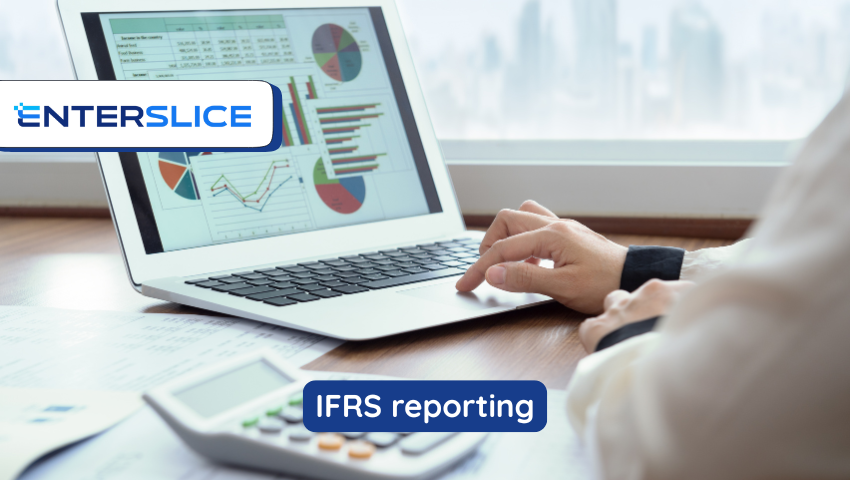If you’ve ever wondered how global companies present their financials on a common platform, the answer lies in IFRS reporting. IFRS stands for International Financial Reporting Standards — a set of accounting rules that aim to bring consistency, transparency, and comparability to financial statements across borders.
Businesses adopt IFRS reporting to align with international practices, especially when dealing with investors, foreign stakeholders, or cross-border operations. But executing it correctly is not trivial. Many teams struggle with interpreting principles, handling complex estimates, and keeping pace with standard updates. In this article, I’ll walk you through the essentials, pain points, and smart strategies to manage IFRS reporting with confidence.
The Core Principles Behind IFRS Reporting
Understanding the spirit behind the rules is as important as applying the rules themselves.
First, IFRS is principle-based rather than rule-based. Rather than prescribing step-by-step recipes for every scenario, it demands judgment, consistency, and disclosure. You must interpret how principles apply to your transactions, which requires both accounting insight and industry experience.
Second, IFRS calls for faithful representation, relevance, comparability, and understandability. You don’t just record transactions — you tell a story that stakeholders can trust. That means estimates, judgments, and assumptions must be clearly documented and disclosed.
Third, changing standards is part of the journey. New standards or amendments can affect how you present financials or what you must disclose. Staying current is critical to credibility.
Common Challenges in IFRS Reporting
Transitioning from a local accounting standard or managing IFRS in daily operations often reveals several pain points. Let’s explore the most frequent stumbling blocks.
Estimations and Judgments
Many IFRS standards require making estimates (for example, impairment of assets, allowances for credit losses, or useful lives of property). Two companies might arrive at different numbers for the same type of asset, because the judgments differ. Without clear rationale and robust backup, your estimates can be questioned by auditors or investors.
Data, Systems, and Internal Controls
IFRS reporting often demands granular data and traceability. Legacy systems or Excel sheets may not suffice when multiple scenarios, adjustments, and disclosures are needed. Weak internal controls or lack of audit trails can amplify risk of errors. A good control environment, reconciliation processes, and system support are vital.
Lease Accounting, Revenue, and Financial Instruments
Complex standards like IFRS 16 (leases), IFRS 15 (revenue from contracts), or IFRS 9 (financial instruments) tend to generate the most headaches. For example, converting operating leases to balance-sheet lease liabilities under IFRS 16, or fair valuing financial instruments, involves multiple moving parts. Mistakes here impact many lines of your financials.
Compliance with Frequent Changes
Standards evolve. New ones get introduced, existing ones change, and disclosures expand. For example, IFRS 18 (new presentation and disclosure standard) is set to replace IAS 1, bringing changes to how profit or loss is laid out and what non-IFRS measures you must reconcile. You need a process in place to monitor updates and assess impact.
Cross-border and Currency Issues
If your business operates in multiple countries, you might need to deal with different functional currencies, translation adjustments, and local standards. Consolidation across subsidiaries can complicate the process, especially when combining local GAAP and IFRS entities under a single set of financials.
Best Practices to Streamline Your IFRS Reporting
Knowing the challenges is half the battle — here are actionable ways to manage them effectively.
Build a Strong Foundation with Policy Documentation
Start by documenting your accounting policies, assumptions, and decision framework. This includes how you assess impairment, approach lease modifications, handle provisions, etc. Clear documentation helps everyone stay aligned and makes your numbers defensible during audit or review.
Use Robust Systems and Automation
Moving from manual spreadsheets to dedicated accounting or reporting software pays off. A good system helps with versioning, audit trails, automated adjustments, scenario modeling, and validation checks. Integrations between modules (e.g. ERP, lease module, fixed assets) reduce reconciliation errors.
Engage Expertise and Continuous Training
Because IFRS leans on judgment, consider including experienced accountants, technical advisors, or external consultants when dealing with complex standards. Also invest in ongoing training for your finance team — especially when new standards or amendments come into play.
Establish Governance, Controls & Review Cycles
Set up a calendar of reviews, internal controls, cross-check processes, and peer reviews before finalizing the statements. Incorporate a review by technical accounting specialists who can spot gaps or inconsistencies ahead of auditors.
Monitor Standard Updates and Plan Ahead
Stay subscribed to IASB exposure drafts, local standard-setting bodies, and professional networks. When a change is proposed, conduct impact assessments early (e.g., for IFRS 18, which becomes effective in 2027), so you aren’t caught off guard.
Consider Outsourcing or Shared Services
Many companies, especially those with limited internal bandwidth, outsource parts of IFRS reporting or maintain a shared services center. Outsourced experts can offer efficiency, domain knowledge, and up-to-date standard awareness. In fact, in surveys, a high percentage of CFOs cited outsourcing IFRS compliance as a solution to lighten internal burden.
Practical Steps to Get Started (or Improve)
-
Perform a gap analysis: Compare your current local practices against IFRS requirements, identify the gaps, and plan remediation.
-
Prioritize high impact standards (leases, financial instruments, impairment) where errors are most likely.
-
Roll out pilot trials or mock reporting cycles to test new adjustments before going live.
-
Document all judgments and backup evidence at every step.
-
Maintain close communication with auditors — early engagement helps reduce surprises.
-
Set up a monitoring team or committee that tracks standard changes, industry trends, and emerging disclosure expectations (e.g. climate-related risks).
By embedding these steps, you reduce risk, speed up reporting, and build credibility over time.
FAQs
1. When should a company transition to IFRS reporting?
Typically, a private or public entity shifts to IFRS when it has global stakeholders, seeks foreign investment, or is mandated by local law. The transition often happens at a fiscal year start, with opening balances restated under IFRS.
2. How do you deal with leases under IFRS?
Under IFRS 16, most leases are capitalized on the balance sheet as right-of-use assets and corresponding lease liabilities. The lease cost is split into amortization and interest. Variable lease payments or short-term leases may be exempt under certain conditions.
3. Can estimates or judgments be challenged by auditors?
Yes. Auditors may question assumptions lacking support or consistency. That’s why robust documentation, sensitivity analyses, and peer review are critical to defend your decisions.
4. What happens if a company fails to comply with IFRS?
Non-compliance can erode investor trust, trigger regulatory issues, fines, restatements, or qualified audit opinions. In highly regulated environments, it might also affect the company’s access to capital markets.







0 Comments